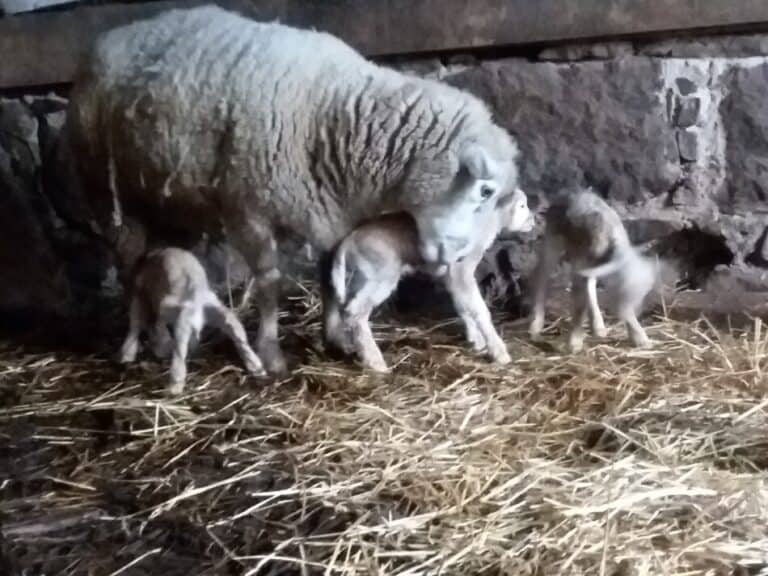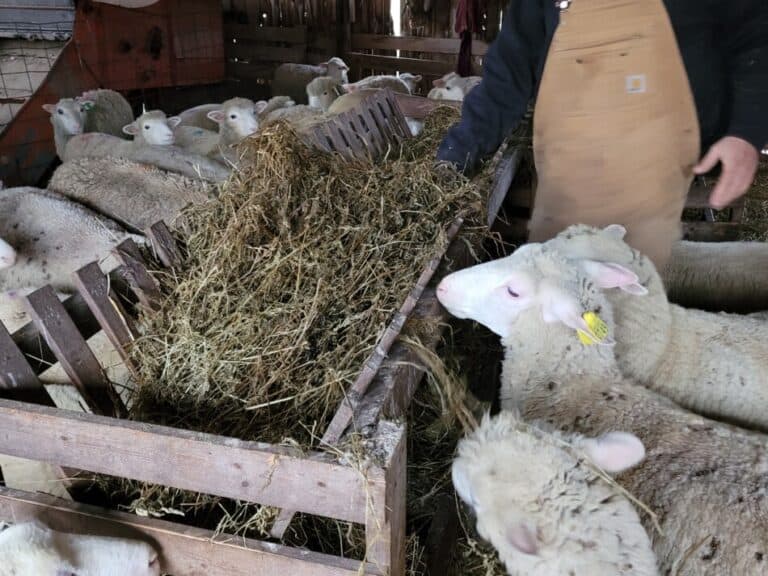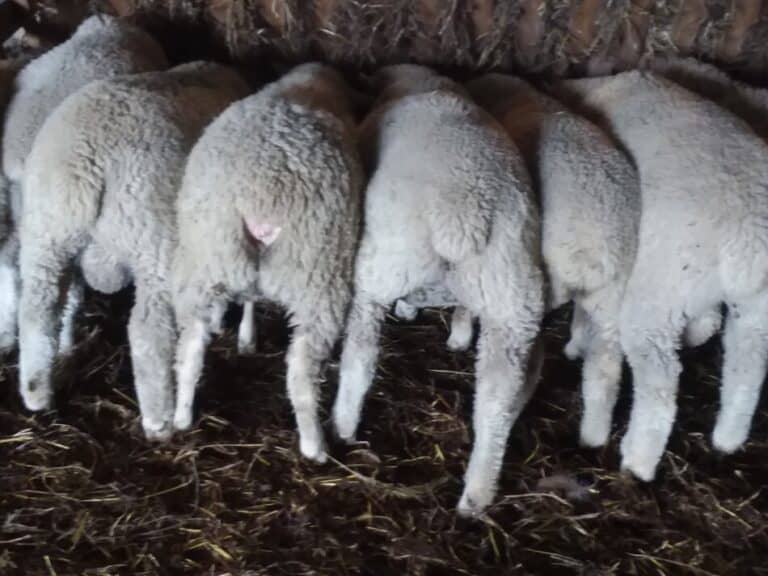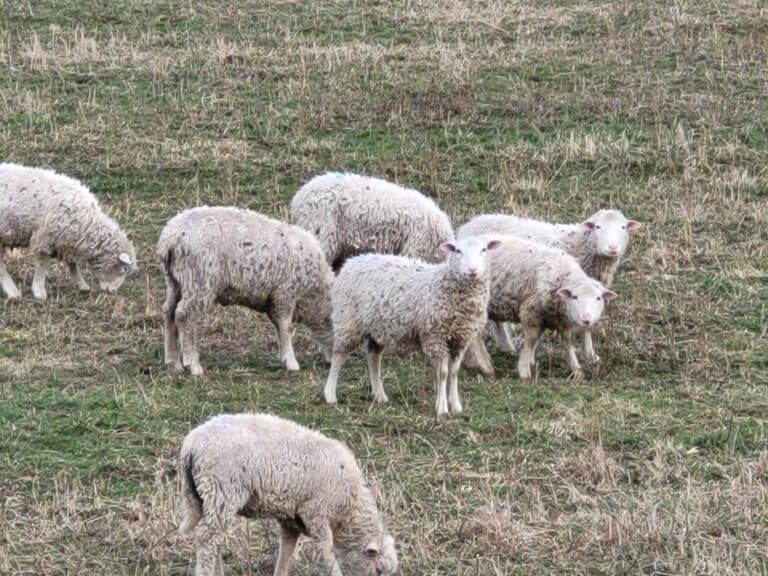How Do You Know If A Sheep Is In Labor?
Most of your sheep production year is centered around lambing. You plan the best time for lambing in your area and you’ve kept the ewes in good condition, so you are as ready as you can be.
Then, when the lambing season is only days away, you wonder how do you know if a ewe is in labor and what, if anything, should you do about it?

Early labor in sheep is more subtle
In the early stages of labor, the ewe will, for the most part, seem to be normal. There are just a few odd things that, if you are paying attention, you will notice.
This is the “huh, that’s odd” or “I wonder why she is doing that” type stuff. If it’s lambing time, chances are good you’ll be seeing her go deeper into labor in short order.
Lambing Season: What to expect and how to be ready is my article that gives you some things to get set up and be ready for to have a more successful lambing season.
Ewe will be restless
At first a ewe will just be restless. You don’t really see anything specific going on, it’s more that you notice she seems uncomfortable and the rest of the flock is just hanging out and chewing their cud.
What we see the most is that a soon to be new mom, gets up and lays down repeatedly, almost like she just can’t quite decide which will be best.
Clearly she is uncomfortable. When you think about it, this is a good bit of extra work that she is putting in, it would be easier just to plop down like everyone else. But she doesn’t.
Keep an eye on this gal and if you don’t see any progress soon, might just be the time to mosey on out there and see what’s up.
The other part of being restless is that she will be doing something that the rest of the flock is not.
For instance, why is one ewe standing when everyone else is laying down? Maybe she is first to stand or last to lay down, but if it’s lambing time, she’s one to check back on later today.
Lambing Time Supply List: What you really need and what you don’t is my article that shows you the things that we have found important to have on hand for lambing time.
Ewe stands off by herself
Is the ewe standing off by herself? Sometimes ewes can sneak away and be off in her own corner of the world without you ever realizing what happened, which is super if things look like they are going well.
If you see a ewe off by herself, just check back on her in a bit. If she seems to be off by herself for a while without progress (no lambs yet) go look closer and see if there are problems. If not, give her some time.
A ewe will naturally remove herself from the group, if the situation allows it. To eliminate confusion, she wants to have a separate area to keep her lambs to herself until they can bond well to her and be mobile.
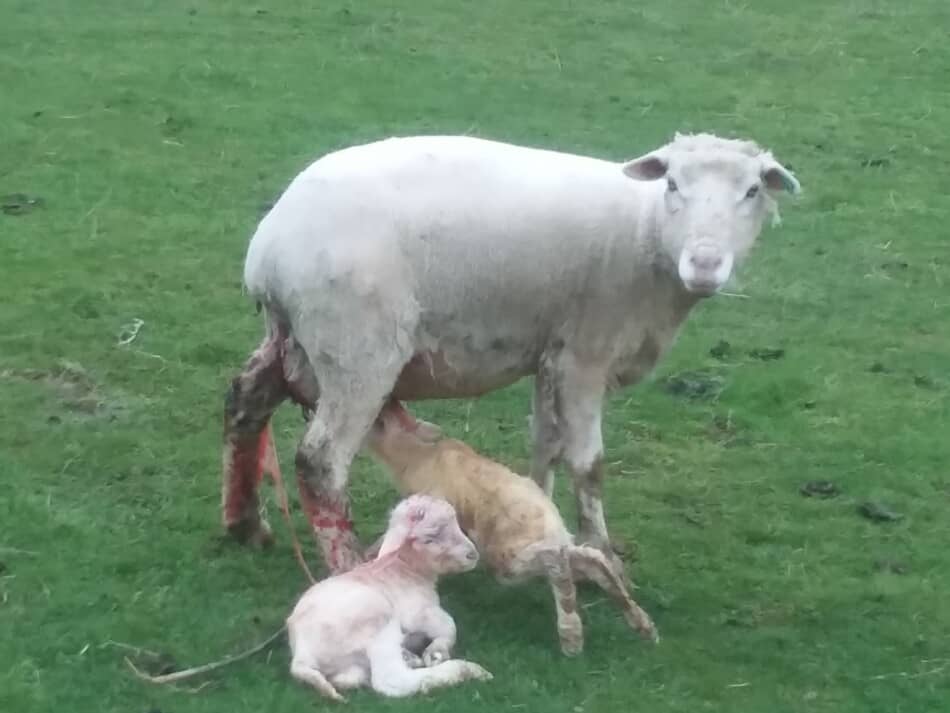
Signs that the lamb will be born soon
Once the ewe gets past the restless stage she moves into the more advanced labor stage, which is where you can fairly easily see that she is working to give birth.
Signs of active labor in ewes include:
- sides heaving
- legs and neck straining
- may see glimpse of feet
Sides heaving means that the ewe is working to push the lambs through the birth canal. She will work in spurts, a few heaves and then take a mini break of sorts then a few more.
As the lambs get closer to being born the pushes by the ewe will be more intense.
What do you need to do here? Nothing, leave her alone and see what happens for a while. Labor is a process that takes time, leave her in peace and just keep an eye on her while giving her plenty of space.
Now is not the time to hover, in fact, hovering over her will cause some of your more flighty sheep to get up and zoom away from you. Keep your distance for now and give her some time.
Legs and neck straining means that she is really getting somewhere now. You should be seeing feet soon, if not already and that lamb should be born shortly.
If you see the ewe straining for longer than you are comfortable with, move around unobtrusively as you can, to see if the lamb is positioned appropriately.
You should see the bottom of two hooves facing toward you or down, depending upon the position of the ewe. The lamb will “dive” out to be born, feet first, then head on knees, then shoulders.
Some ewes are smoking fast at giving birth, others seem to take more time and that’s fine. Give them space to work on birth themselves before start poking around.
Will A Ram Hurt Lambs? is my article that gives you some things to look for to make sure that your ram is not bothering your ewes or new lambs at lambing.
What if you need to help with the birth?
Most ewes give birth without any need to be assisted.
The newer folks are with sheep and especially the first few lambing seasons, the more likely them seem to be to want to interfere. Resist the urge to jump in and let your ewe work things out herself.
If you feel that you need to assist the ewe, my first question is are you sure or are you getting antsy? Go quietly look, while keeping your distance so you don’t upset the ewe.
If you catch her attention, you are too close. If you don’t see any problems, note the time and come back to her later, like in 10 or 15 minutes.
Do you see something that makes you sure that things are not going super well, like head only or one leg? If so, grab her or get her into a lambing jug and straighten things out.
The lamb needs to be in the birth position, which is front feet first with legs extended, head on knees, then shoulders and the rest of the lamb.
Reposition the lamb if you need to. This can be hard to do, if you need help call your vet.
A common malpresentation we see is elbows tucked back. In this case, just grab one foot, pop it forward, then pop the other one (do them one at a time) then the lamb is in the right position to be born.
Head only is a tough one, what you really need to do is push the whole lamb back in, grab front feet and make the lamb come out the way it should. Don’t forget to make sure the head is right, as well.
You may be better off with vet help for this situation.
Another problem that can crop up is two feet but from different lambs. We rarely see this but have had it happen once or twice. Be sure that if you are helping a ewe that the feet you see go to the same lamb.
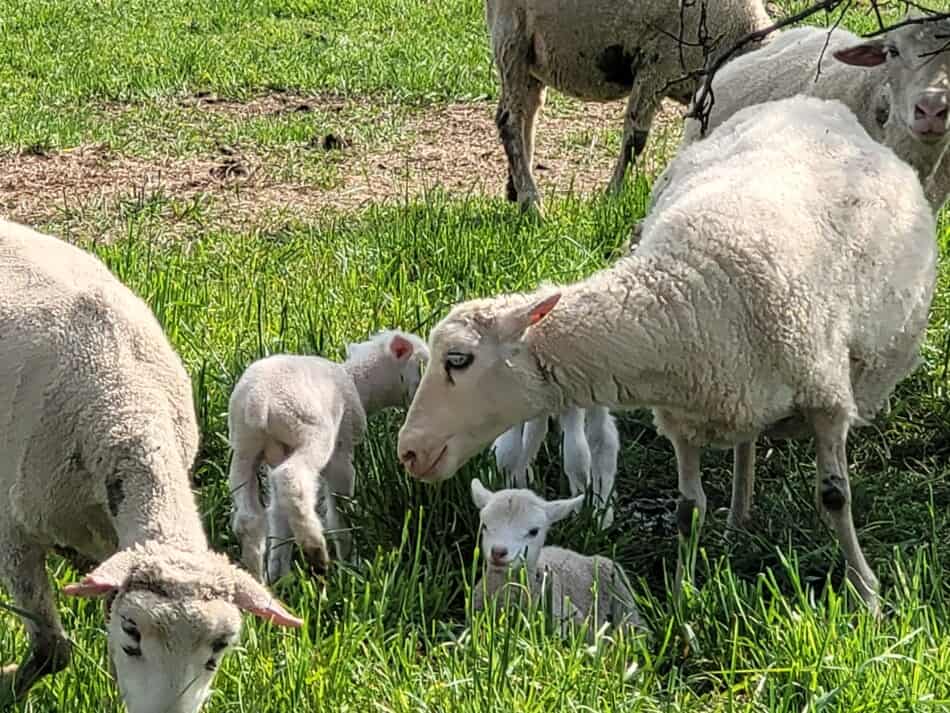
How many lambs will she have?
The next question is how many lambs will your ewe have? Unless you have ultrasound scanned the group, you don’t know until you see the afterbirth.
If the ewe is up and licking off the lamb and you see a bit of flopping from the lamb, she should be okay (as long as the weather is acceptable).
If there is another lamb, it should be born shortly.
As long as she is doing well and in a good place in the barn or pasture, you can leave her to finish bonding or move her to a lambing jug, if that is your preference.
Can You Keep Rams With Ewes Year Round? is my article that goes over how to schedule your lambing season to better suit your resources, including your time and available feeds.
When is the ewe done giving birth?
You can tell that the ewe is done giving birth when the afterbirth starts to come out.
Once a lamb is born, there will be a “string or rope” hanging out of the ewe that was attached to the lamb. You will see one rope for each lamb. This is not the afterbirth.
The afterbirth will be a bigger blob that hang out of the ewe and will eventually detach and fall out on it’s own. You do not need to mess with any of this, leave it alone.
Once out of the ewe, the afterbirth kind of looks like a jellyfish puddled on the ground. If the afterbirth takes some time to detach, fine. Birth is on the ewe’s timetable, so is expelling all of the afterbirth.
For a more detailed explanation of lambing, especially lamb presentations (birth positions) read Sheep 201: The lambing process.
